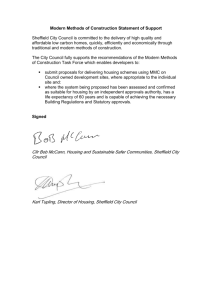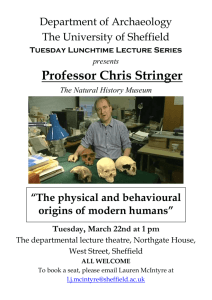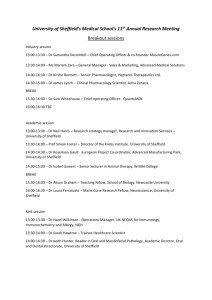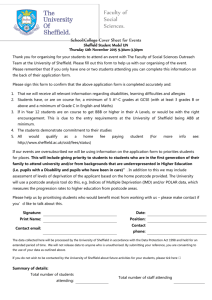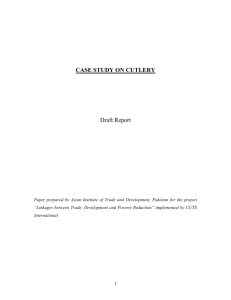Children and Industry
advertisement
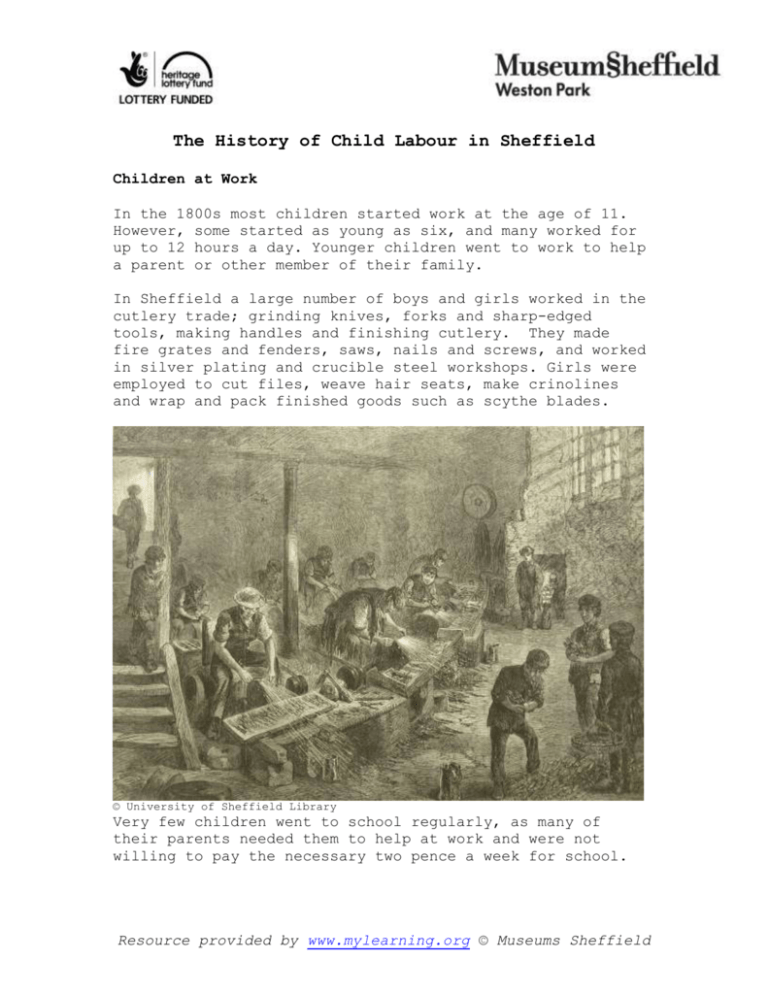
The History of Child Labour in Sheffield Children at Work In the 1800s most children started work at the age of 11. However, some started as young as six, and many worked for up to 12 hours a day. Younger children went to work to help a parent or other member of their family. In Sheffield a large number of boys and girls worked in the cutlery trade; grinding knives, forks and sharp-edged tools, making handles and finishing cutlery. They made fire grates and fenders, saws, nails and screws, and worked in silver plating and crucible steel workshops. Girls were employed to cut files, weave hair seats, make crinolines and wrap and pack finished goods such as scythe blades. © University of Sheffield Library Very few children went to school regularly, as many of their parents needed them to help at work and were not willing to pay the necessary two pence a week for school. Resource provided by www.mylearning.org © Museums Sheffield The workshops and workplaces were dark, dusty and badly looked after so the workers faced many dangers. The machines they used were old and there was little or no fresh air for the workers to breath. Children often had accidents, getting caught in the unguarded machines. There were also the dangers from the dust in the workshops. Grinders of all types of knives and tools often developed the lung disease, ‘silicosis’ (also known as the grinder’s disease) which in many cases lead to death. Buffer girls who polished silver cutlery, also faced many hazards, indeed all buffers expected to “get collared” or “have an accident” at some time in their working life. A lot of them had to have stitches in their hands, due to them accidentally catching their hands on the wheel, or sometimes due to the finger rags that they wore, catching on a spindle. The more serious accidents were caused by the buffing wheels flying off and striking workers. It was not until 1880 that a law was passed that meant all children under the age of 10 had to go to school. Resource provided by www.mylearning.org © Museums Sheffield The History of Child Labour in Sheffield Questions - Children at Work Q1. At what age did most children start work in the 1800s? Q2. What kind of trade were most working children in Sheffield employed? Q3. How much did it cost to send a child to school? Q4. When was a law passed, stating that all children under 10 must go to school? Q5. What do you think it would have been like working in a factory in those days? Resource provided by www.mylearning.org © Museums Sheffield
